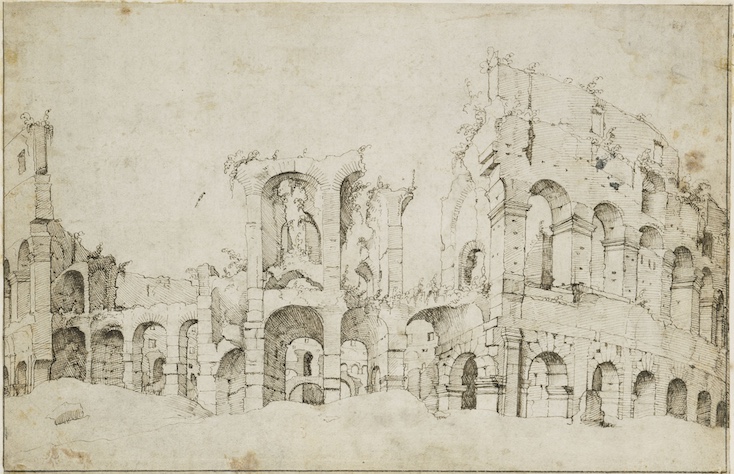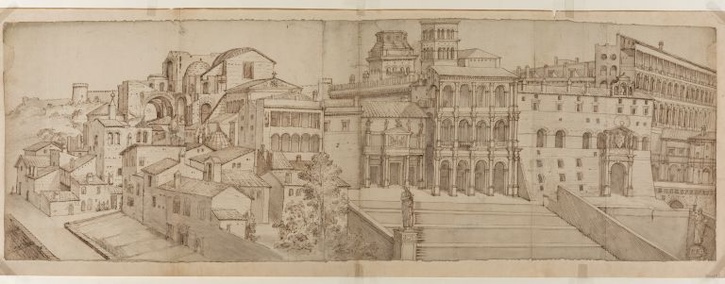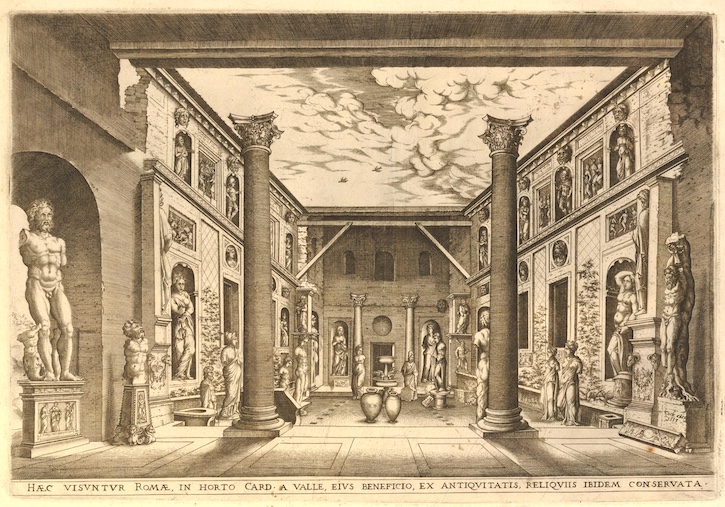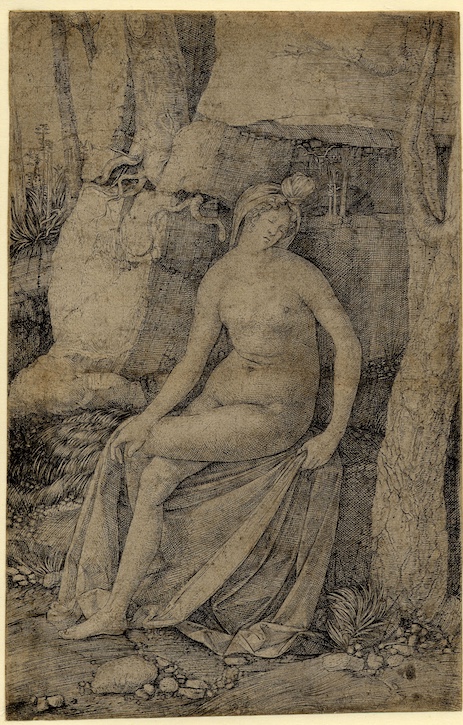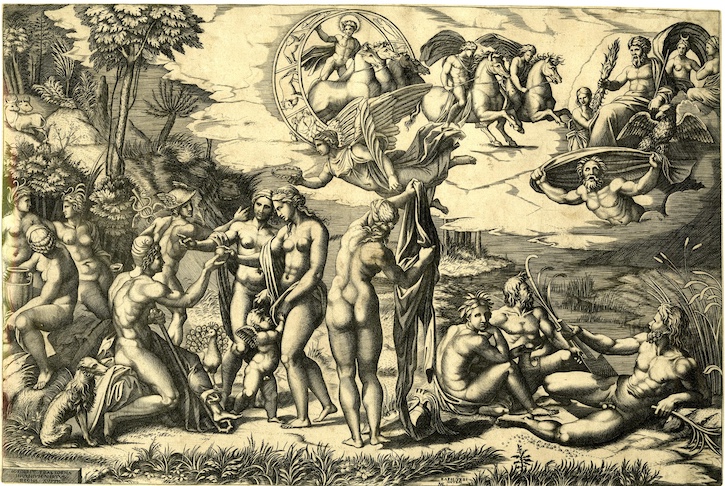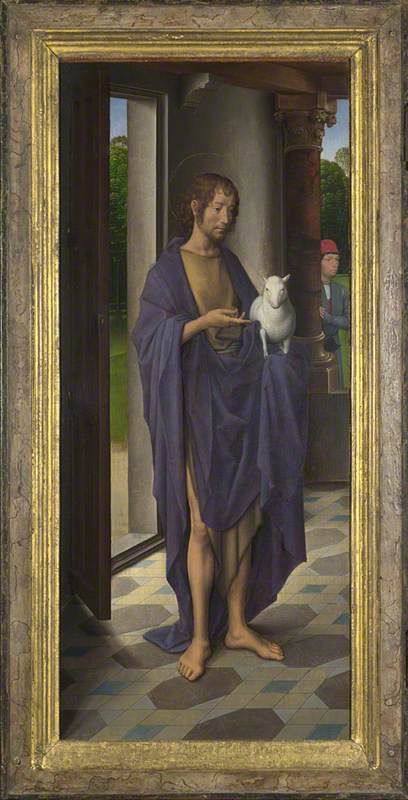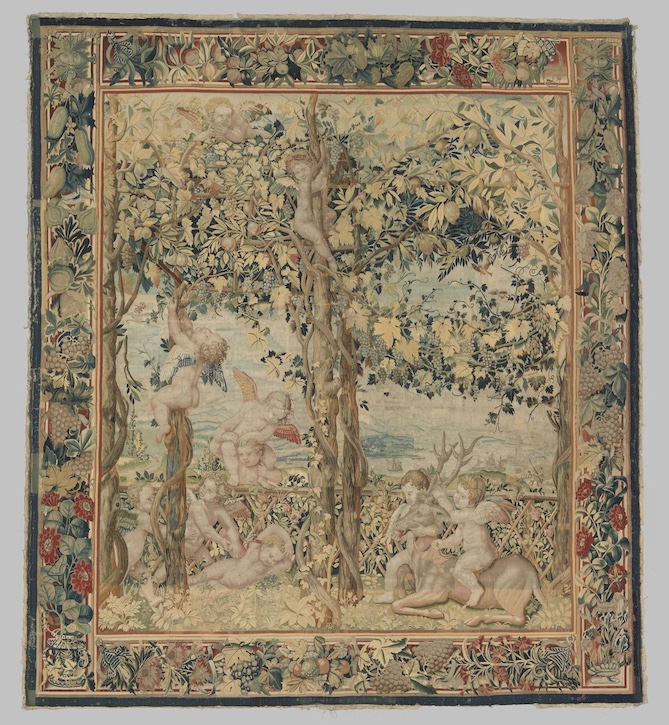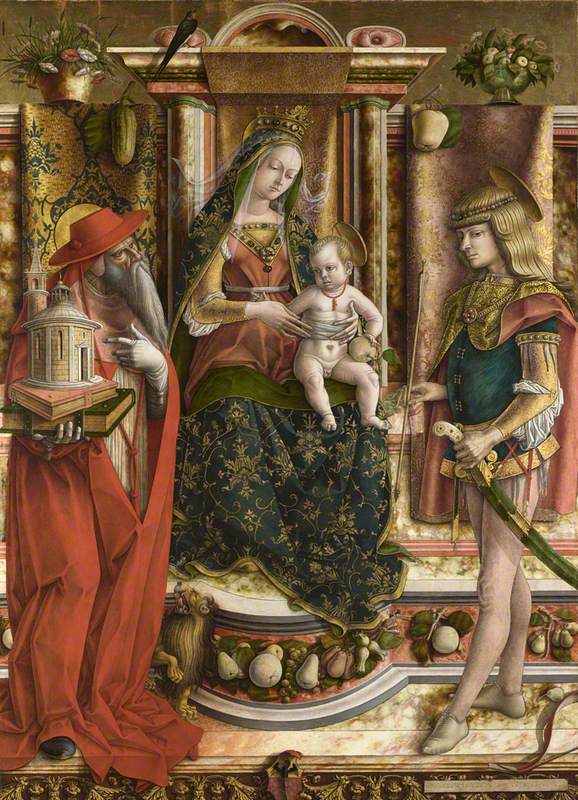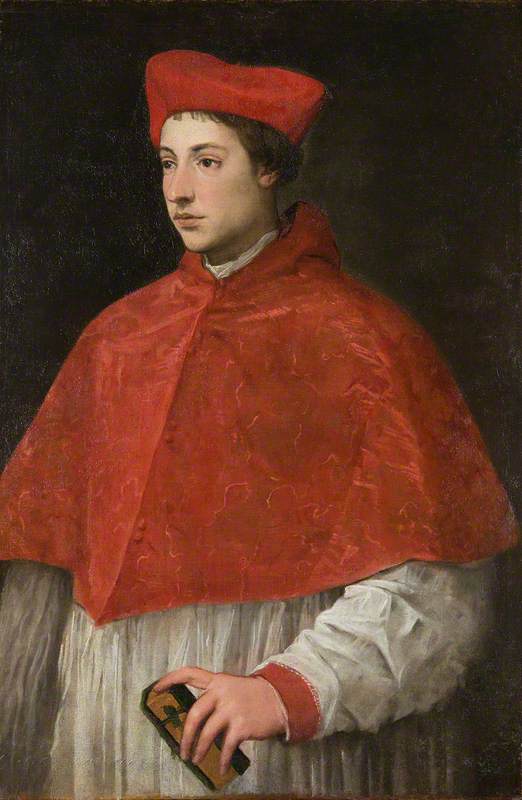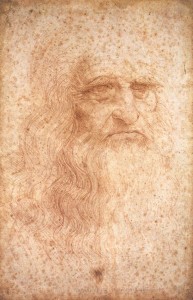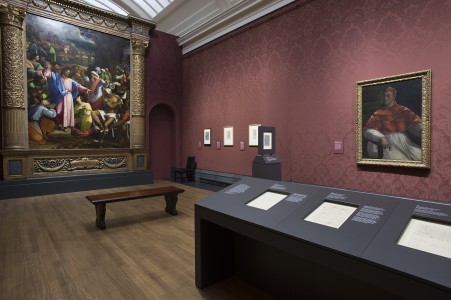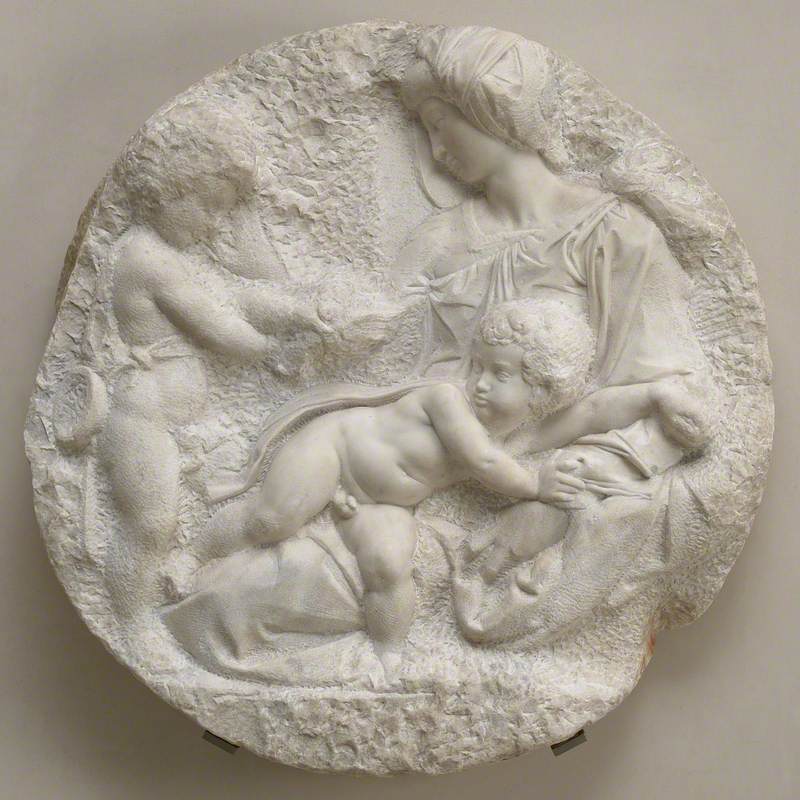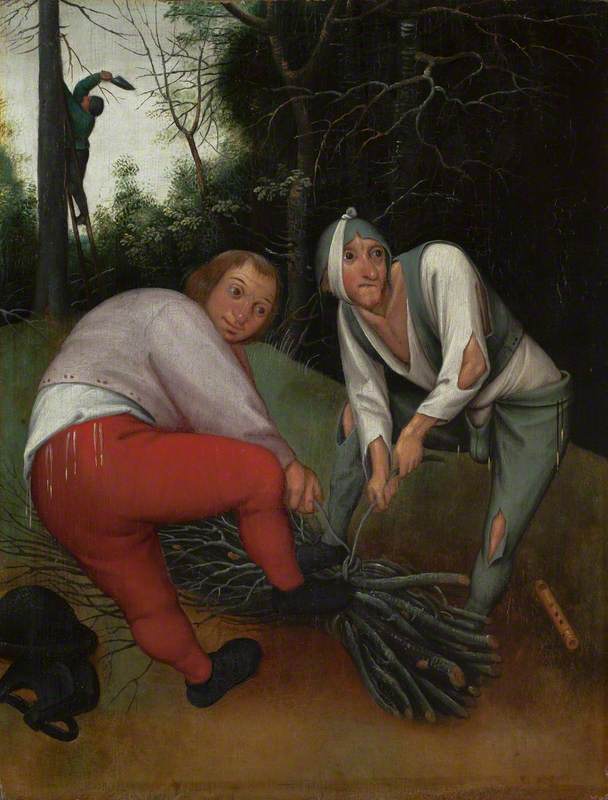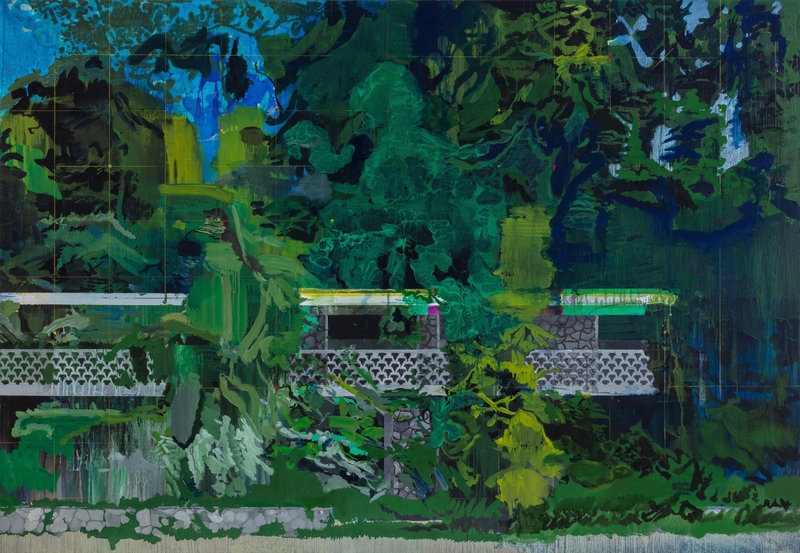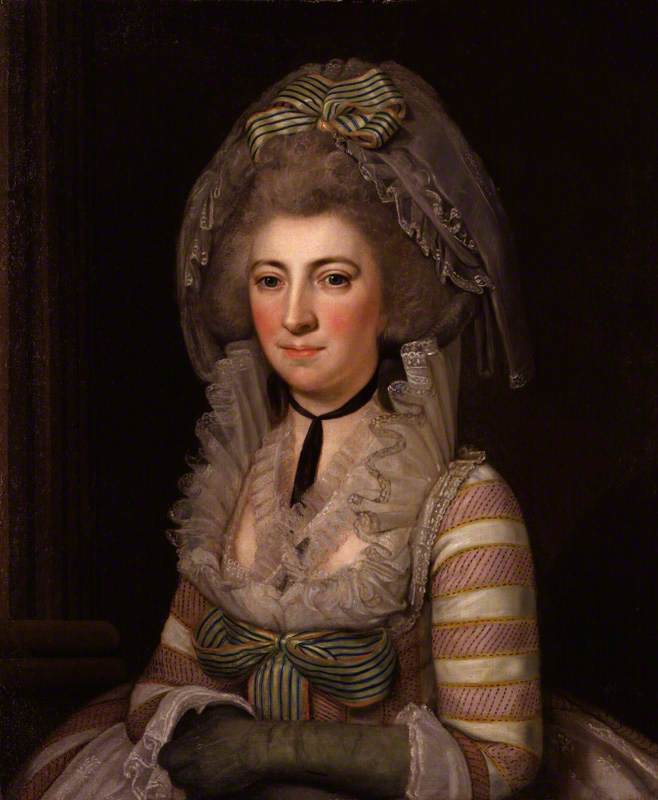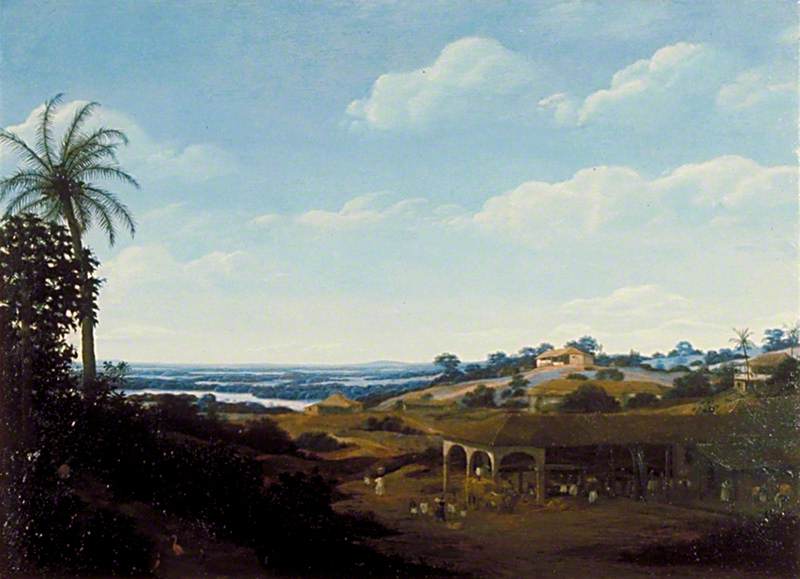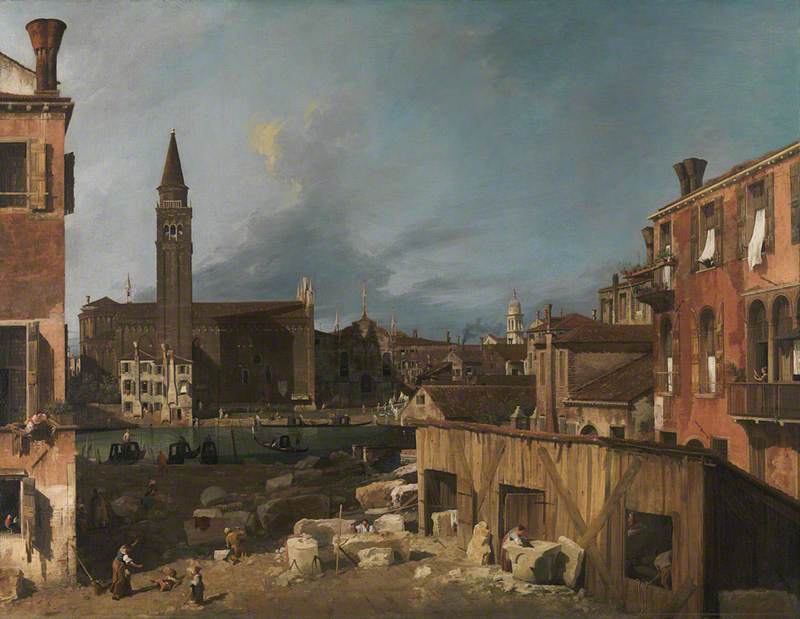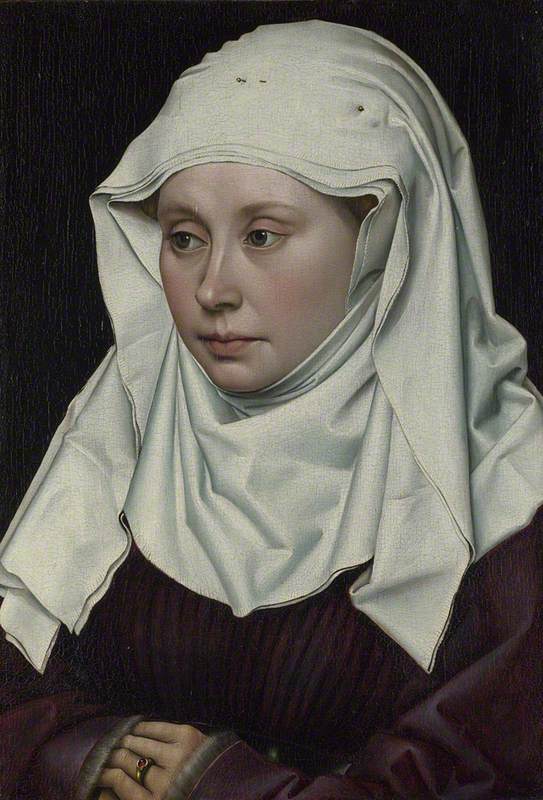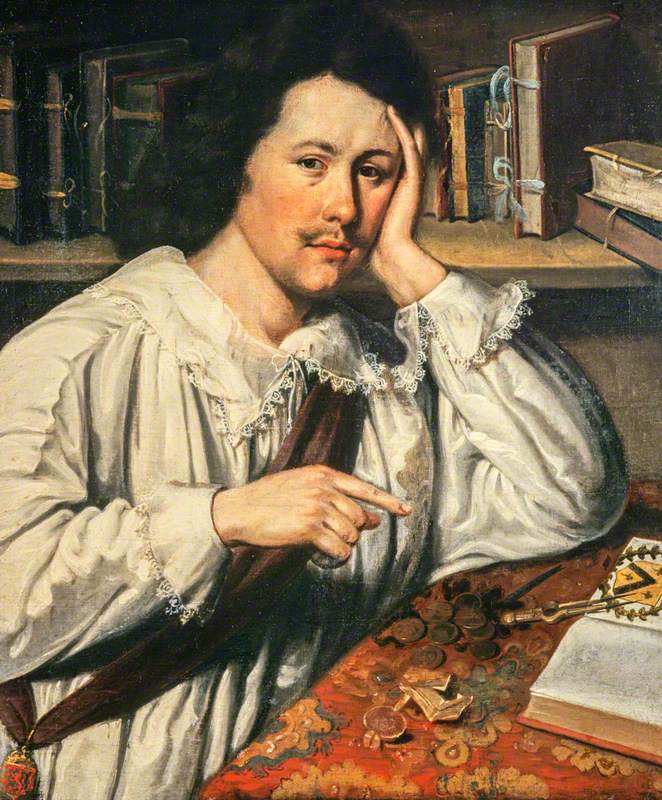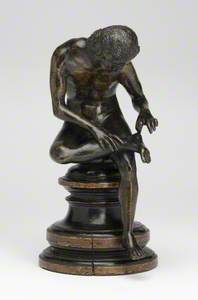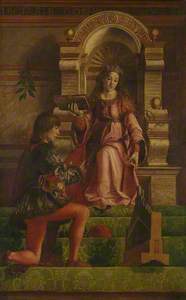In 1553 the Dutch artist Maerten van Heemskerck (1498–1574) painted his Self-portrait, perhaps to commemorate his election as Dean of the Haarlem Painters Guild. However, he is only partly the subject of this remarkable painting, which is equally a 'portrait' of the Colosseum.
Self Portrait with the Colosseum, Rome
1553
Maerten van Heemskerck (1498–1574) 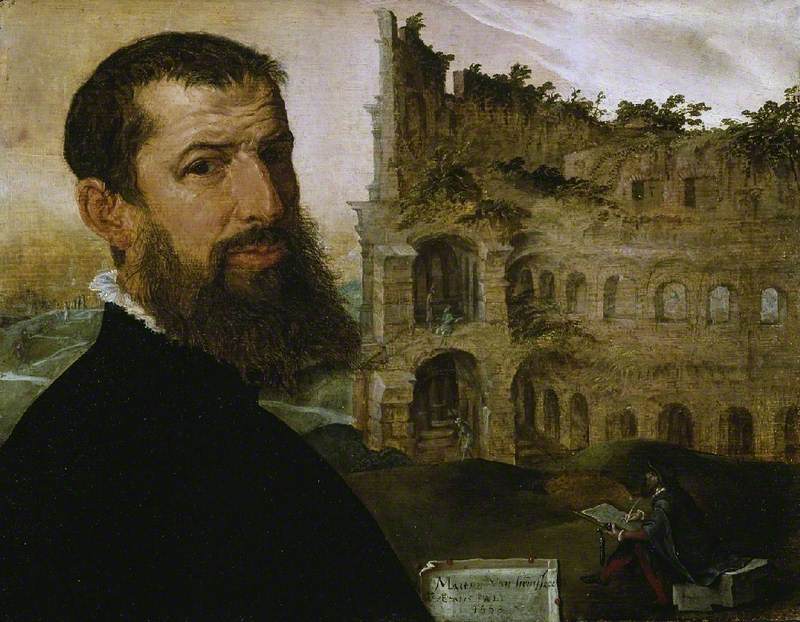
A scrap of paper bearing the date, Heemskerck's signature and age (55), painted to look as if stuck to the picture surface with a few blobs of red sealing wax, gives the impression of a painting within a painting. Overlapping the paper's left-hand edge by a few millimetres, Heemskerck's bust seems part of our space; his sharp, intelligent gaze inviting us to admire.
In front of the ruin, we see a small figure sketching, pen and inkpot in hand – presumably the artist himself. Heemskerck must have sat in this very spot when he drew the Colosseum during his stay in Rome twenty years earlier, in one of many beautiful pen sketches of classical ruins, statues and contemporary views now in the Kupferstichkabinett in Berlin.
Including the Colosseum in his Self-portrait was not simply an act of personal recollection, but an artistic calling card. By 1550 Italy had become a goal for many Netherlandish artists, such as the anonymous Flemish artist who drew a panorama of St Peter's (then under construction) possibly on his return home.
It includes never-realised ideas for St Peter's by the architect Antonio da Sangallo, suggesting that the artist was at home in Roman architectural circles.
Over the previous fifty years, the new learning of the Italian Renaissance, inspired by classical antiquity, had spread to northern Europe. So too had knowledge of modern masters such as Raphael and Michelangelo.
To experience at first hand Italy's artistic treasures, ancient and modern, was exciting for Netherlandish artists. It was also a means of enriching their visual repertoire and boosting their reputation at home, where demand for artworks influenced by Italianate fashions was growing. For those (artists and consumers alike) who could not travel to Italy, there was the burgeoning art form of the print, reproducing famous artworks and sites.
The hub of Netherlandish print culture was Antwerp, dominated by Hieronymus Cock, a painter and printmaker who as a publisher of engravings tapped into the vogue for things Italian. His engraving of the Statue Court of the Palazzo della Valle, a celebrated collection of ancient sculpture in Rome, reproduces one of Heemskerck's drawings.
As well as the monuments of Rome, Heemskerck studied Italian style. The figure of Mary Magdalene from a triptych painted for an unknown donor is a dazzling riposte to the elegant figures, hairstyles and clinging draperies of Mannerist artists such as Parmigianino, whose work he could have seen in Rome.
The Donor and Saint Mary Magdalene
about 1540
Maerten van Heemskerck (1498–1574) 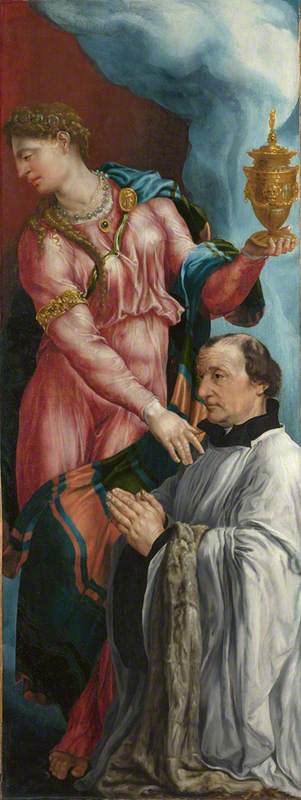
The Madonna and Child with Saints John the Baptist and Jerome
1526-7
Parmigianino (1503–1540) 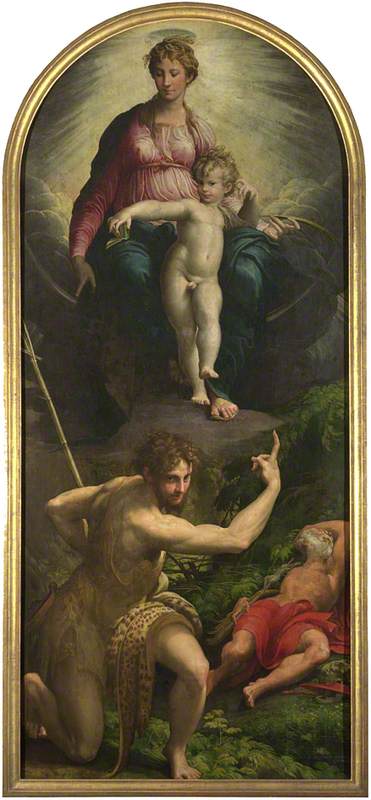
The Madgalen's classicising vase in Heemskerck's work resembles fashionable tableware designs by Giulio Romano, while her graceful twisting pose alludes to Leonardo's famous Leda and the Swan, now known only from copies. Her severe profile recalls ancient sculptures and coins.
Design for a Vase
Pen, brown ink & brown wash on paper by Giulio Romano (c.1499–1546) 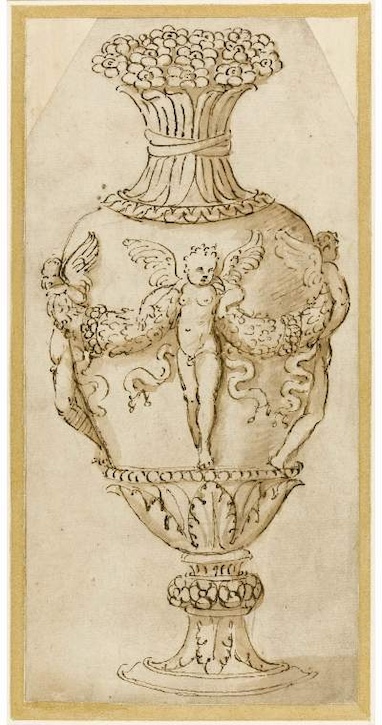
Heemskerck was by no means the first famous Netherlandish artist to visit Italy. A generation earlier, Jan Gossaert (1478–1532) travelled to Rome in 1508–1509 with his aristocratic patron Philip of Burgundy, who was passionate about classical antiquities, which he had Gossaert copy for him. Philip also had a taste for erotic Italianate nudes, an art form Gossaert became famous for.
In Gossaert's Hercules and Deianira (1517), the body types of Hercules and his wife Deianira, characters drawn from fashionable classical mythology, and their setting – which includes fictive relief sculptures of the Labours of Hercules – are clearly inspired by ancient and contemporary Italian art and architecture. Hercules' enormous club is a jokey phallic symbol, but also alludes to the Roman statue of the Hercules of the Forum Boarium, drawn by Gossaert in Rome.
Deianira's pose may reflect an engraving by the Venetian Jacopo de' Barbari, one of relatively few Italian artists who travelled to the Netherlands, and who was also employed by Philip of Burgundy.
Gossaert is justly credited by Giorgio Vasari and other early writers with introducing the Italianate nude to the Netherlands. Yet erotic images of female nudes were well established in the fifteenth-century Netherlandish repertoire. Jan van Eyck (1390–1441), for instance, painted a famous Women Bathing, recorded at Urbino in the 1450s (now destroyed), which depicted female nudes in an interior with a mirror.
In his drawing of a similar subject, Gossaert cleverly melds Netherlandish tradition and Italian innovation.
Women bathing
c.1520–1525, ink & chalk on paper by Jan Gossaert (1478–1532) 
The figures at the bottom left and far right of Gossaert's drawing are based on poses in Marcantonio Raimondi's engraving of The Judgement of Paris after Raphael.
The seated woman on the left recalls the famous antique statue of the Spinario (Boy with Thorn), which was also drawn by Gossaert in Rome. A sixteenth-century bronze copy of the Spinario by Severo Calzetta da Ravenna is in the Fitzwilliam Museum collection.
Just as Italian and classical art were all the rage in the sixteenth-century Netherlands, so in fifteenth-century Italy, Netherlandish painting was greatly admired for its naturalism and technical virtuosity. It was recognised that the oil technique as practised by Netherlandish painters of Van Eyck's generation (around 1420–1430) produced unprecedentedly true-to-life effects – for instance in the depiction of landscape, portraits and a whole range of textures.
Van Eyck's Women Bathing was one of many Netherlandish artworks that reached contemporary Italy as gifts or purchases, gracing the collections of elite patrons such as the Pope, the King of Naples, and the Medici. Italian merchants, resident in the commercial metropolis of Bruges, such as Giovanni Arnolfini of Lucca (usually identified as the man in Van Eyck's famous double portrait), commissioned paintings for themselves.
Portrait of Giovanni(?) Arnolfini and his Wife
1434
Jan van Eyck (c.1380/1390–1441) 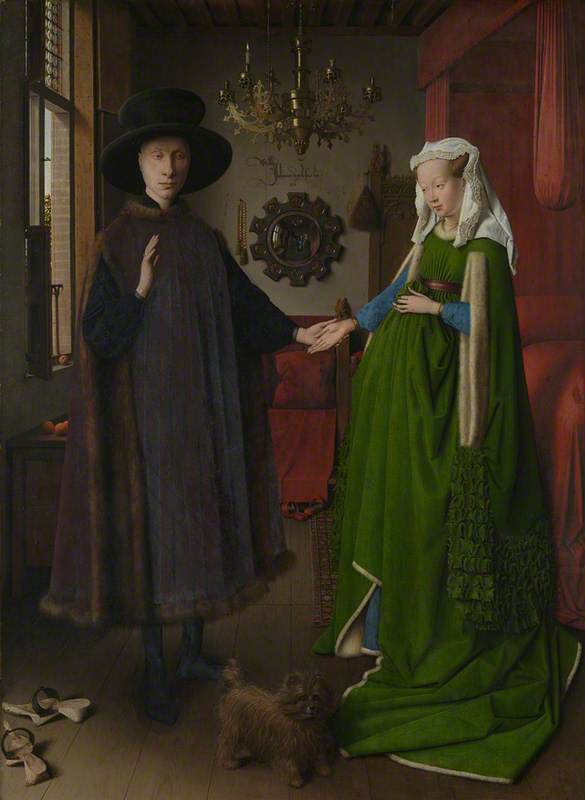
They were also well placed to act as agents for patrons based in Italy, such as the Florentine bishop Benedetto Pagagnotti, who ordered a triptych from Hans Memling (1430–1494) featuring Saints John the Baptist and Lawrence on the wings.
Federico da Montefeltro, Duke of Urbino, the possible owner of Van Eyck's Women Bathing, took the highly unusual step of recruiting a Flemish painter to work at his court because, according to his biographer Vespasiano da Bisticci, he could not find a painter in Italy expert in the art of oil painting.
Giusto di Gand (Justus of Ghent) (1410–1480) is documented at Urbino in 1473–1475, and probably died in Italy. He painted a number of works for Federico's palaces including a series of the Liberal Arts, in which Netherlandish technical sophistication melds with Italianate perspective and architectural forms.
Justus responded to the artistic ambience of Urbino, where artists such as Piero della Francesca and the Sienese architect Francesco di Giorgio worked. Similarly, his Netherlandish style and technique influenced local artists such as Giovanni Santi, Raphael's father, who adopted Netherlandish ways of painting landscape and luxury textiles.
The Virgin and Child
perhaps about 1488
Giovanni Santi (1430/1440–1494) 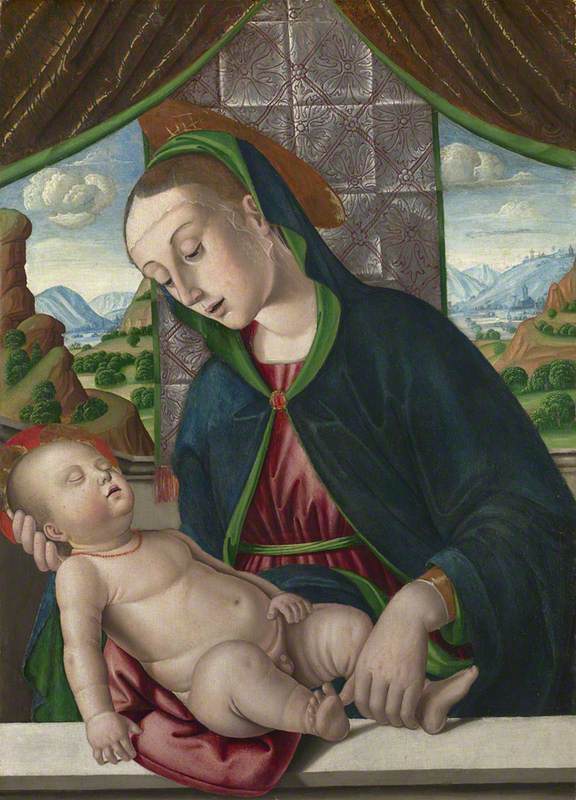
Unlike Heemskerck and Gossaert, Justus of Ghent did not go to Italy because of the allure of Italian or classical art, but because his uniquely Netherlandish skills were in demand there. This was true of many Netherlandish artists of the fifteenth and sixteenth centuries documented in Italy, such as the painters employed by Titian and Tintoretto in Venice to paint landscape backgrounds (whose contribution is virtually impossible to identify), and the tapestry weavers and embroiderers, whose specialist skills were no less in demand.
Particularly sought after was the Brussels-born weaver Nicolas Karcher (d.1562), who established tapestry workshops at the courts of Ferrara, Mantua and Florence in the 1530s–1550s, working with Italian artists such as Giulio Romano, designer of this tapestry from Mantua.
Heemskerck, Gossaert, Justus of Ghent and Karcher are just a handful of the many Netherlandish artists who travelled to Italy in the fifteenth and sixteenth centuries, disseminating styles, imagery and techniques. Important agents of artistic exchange, they enriched and transformed Renaissance art north and south of the Alps.
Paula Nuttall, art historian specialising in the Renaissance
This content was funded by the Samuel H. Kress Foundation
